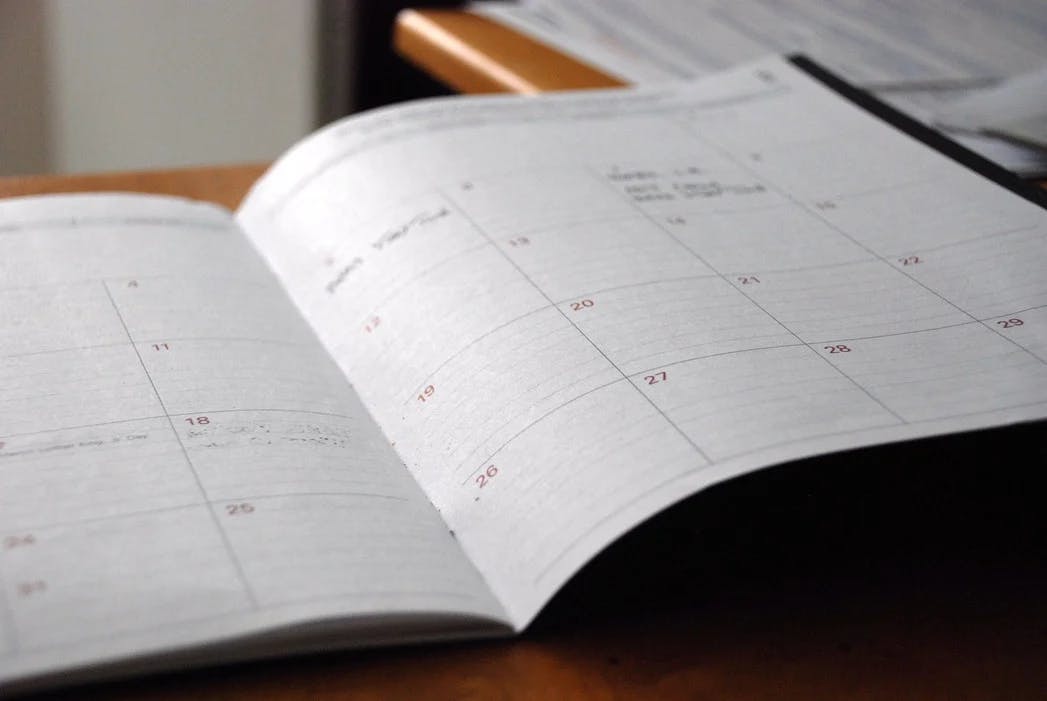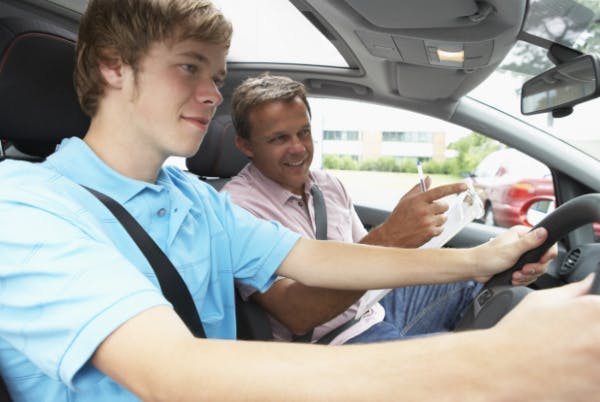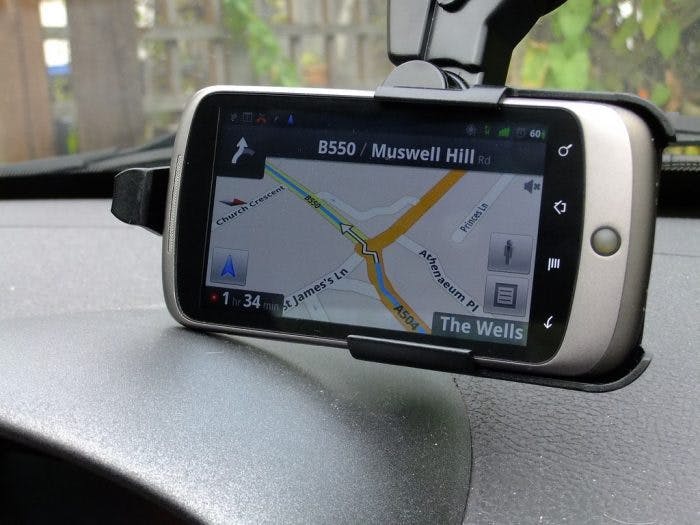At PassMeFast we have plenty of useful advice up our sleeves to make your test day run as smoothly as possible.
February 13, 2024
•8 min read

Sam Plant
Content Writer

The prospect of walking into your first (and hopefully only!) practical driving test can be a little daunting. All the blood, sweat, tears and money have built up to this moment. It's no wonder, then, that learner drivers can feel an incredible amount of pressure on their shoulders.
So, how do you prepare for such a situation? It's a fair enough question to ask—acing something you've never done before is no piece of cake! Fear not, though, as at PassMeFast we have plenty of useful advice up our sleeves to make your test day run as smoothly as possible.
Buckle up, pay attention and clear some space in your wallet for a brand new licence, because we're about to launch into our top tips and tricks to prepare for the driving test!
Make sure you've taken enough driving lessons

It might seem a bit obvious, but the most important way to prepare for the driving test is to make sure you've actually taken enough lessons. There's no point strolling up to the test centre if you're not ready—this definitely isn't the kind of test you can blag your way through. In fact, trying to pull such a stunt will only result in a big waste of time and money. Not big or clever.
Struggling to work out how many hours of lessons you need? Everyone is different, of course, but the DVSA generally recommends around 45 hours of professional lessons along with 22 hours of practice. Yep, learning to drive is a big undertaking!
If you've already got some experience under your belt but have taken a break from the wheel, you might be unsure about how much more tuition your require. Not to worry! Give PassMeFast's course recommender a whirl. It's free, easy to use and will give you an answer in seconds. Go ahead, we'll wait.
Does your instructor think you're ready?
Once you've completed the recommended number of hours, there's one more thing you can do to ensure you've had enough lessons: get an expert's opinion. We're talking, of course, about your driving instructor. This person has monitored your progress behind the wheel more closely than anyone, so it makes sense to let them tell you when it's time to hit up the test centre.
If your instructor thinks you need a few more hours of lessons to polish up on some key areas, we urge you to listen to them. After all, they've probably worked with enough learners to know who is likely to pass and who isn't. Plus, it's in your instructor's best interest that you pass first time—so you can trust their judgement!
Fit in some last-minute practice where possible
A great way to make sure you're prepared for the driving test is to keep practising right up to the big day. In other words, try not to leave a significant gap of time between your final lesson and the test itself. When you head into your practical you want to feel super comfortable behind the wheel, with all of the relevant skills still fresh in your memory.
The last-minute sessions don't even necessarily have to be with a professional instructor. If you have any friends or family members who fit the requirements to be able to supervise learner drivers, ask if you can take them for a spin! It's a great opportunity to go over everything your instructor has taught you and get used to driving different cars. The old adage 'practice makes perfect' is definitely true when it comes to driving, so aim for gold star status.
Take a mock test
One of the most effective things you can do to prepare for the driving test is to get your instructor to put you through a mock test. As you can probably guess, this involves them taking you along a local test route and treating it as if they were an examiner. So, don't expect to get a clear picture of where you're headed or to be picked up on any mistakes you make along the way. Instead, your instructor will provide brief directions when necessary and leave any feedback for when the drive is complete—just as will happen on the actual test.
Remember all of those mock tests you had to take in the run up to your GCSEs? None of us particularly enjoyed sitting them, but it did take the sting out of the real thing. Unless you have a failed practical under your belt, a mock test really is the closest you're going to get to how an actual driving test feels.
Know exactly what to expect

Nothing is scarier than the unknown, so make sure you have at least a vague idea of what to expect on the day of your driving test. Hopefully your instructor will have covered this with you, but just in case, we're about to highlight some of the main features of a driving test.
Eyesight test
When your test time arrives the examiner will lead you out of the test centre and, on the way to the car, conduct an eyesight test. We're not talking a full-blown examination like the ones you undergo at the opticians, of course. Rather, you will be required to read a number plate from 20 metres away (or 20.5 metres if it's an old-style plate).
If you fail this task the whole thing will be over before you even get behind the wheel. So, be sure to attend your regular eye appointments and check that your vision is up to scratch before you take the driving test!
Show me, tell me
Thought you were done answering driving questions once you obtained that theory test pass certificate? Think again! During the test the examiner will ask you 2 questions—a 'show me' and a 'tell me'. These are basic vehicle safety questions that you should be able to answer if you've done your revision. For a clear idea of the kinds of questions to expect, check out our guide to the current 'show me, tell me' questions.
The 'tell me' question will be asked before you get into the car, while the 'show me' question may come up at any point during the actual drive. There's no need to freak out if you get a question you can't answer—even messing up on both questions will only result in a minor fault, so you can't fail on this section alone. You should always aim to do your best, though, so be sure to revise these questions in the run up to your test.
Independent driving

The entire driving test lasts for around 40 minutes, and about half of this is taken up by the independent driving section. This involves you driving with little to no instruction from the examiner. Instead, most learners (around 80%) will be required to follow directions from a sat nav. And the other 20%? Well, they'll be expected to go off traffic signs alone.
Try not to get too worked up about this section. Though it sounds a little daunting, if at any point you are confused about where you are meant to be going, you can ask the examiner for further clarification.
Manoeuvres
And now for everyone's favourite section—the manoeuvres! An important part of the driving test is showing the examiner that you are able to carry out advanced reversing exercises. Don't worry, though, in the interest of saving time you'll only be required to perform 1 (of a possible 3) manoeuvres. Of course, as you don't know which one is going to come up, you need to make sure you are able to carry out all of them.
To prepare for the driving test, then, make sure you have mastered the parallel park, bay parking (driving in, reversing out and vice versa) and pulling up on the right. Remember that the latter isn't quite as simple as it sounds. You must pull up on the right, reverse 2 car lengths and then rejoin the traffic.
Find out what to avoid
Once you know exactly what the driving test involves, the next logical step (after squeezing in lots of practice!) is to explore the most common reasons people fail. Learning from the mistakes of others should help you improve your own chances of success.
Handily, a quick search on the DVSA website brings up the exact data we're looking for. When it comes to the top 10 reasons for failing the driving test, mistakes surrounding junctions take up a number of spots. The major culprit is failure to perform sufficient observations at junctions. Other related mistakes include lack of control when steering, failure to move off safely and not checking mirrors when changing direction.
Now that you're armed with this knowledge, be sure to pay particular attention to these areas during your lessons and in the test itself!
Calm those nerves

No matter how prepared you are for your driving test, it's likely that you will feel at least a little nervous on the big day. Even the most confident drivers can be thrown off by the presence of a DVSA examiner. It makes sense really—having a complete stranger next to you in the car silently marking your driving can be rather off-putting!
Even so, you must try to focus on the road and not what's happening next to you. We know that it's much easier said than done, but treat the practical test like it's just a normal drive. Focusing on the high stakes will only add to the pressure and increase your nerves.
If you find yourself struggling to stay calm, close your eyes and take a few deep breaths in through your nose and out through your mouth. Already on the road? If nerves really start to overwhelm you and you think it will affect your driving, you are allowed to ask to pull over during the test. As long as you carry out all of this in a safe manner and the rest of your drive is not affected, you won't be failed on this point.
For more specific advice on this issue, check out our guide to avoiding test day nerves.
Be your best self on the day
By now you should have realised that the practical test is a challenge that you need to take seriously. With this in mind, you should show up to the test centre feeling fit as a fiddle and ready to go. We're talking well-rested, fuelled up and positive. So, make sure you get plenty of sleep the night before and stock up on snacks and water!
Believe in yourself!
Along with feeling physically ready to take on the driving test, make sure you're in the right headspace for the challenge ahead. Block out any distracting or negative thoughts and focus on how far you've come to reach this point. Sure, it's a little corny, but self-belief really is a powerful thing.
You might even find that visualising passing your test first time enables you to turn that dream into a reality. Hey, it works for Usain Bolt, so why not you?!
Pass or fail—PassMeFast has you covered
If you follow the above tips and tricks there's no reason you can't breeze through your practical test like a pro! And remember, even if you don't manage to pass first time, it's really not the end of the world. In fact, less than half of learners manage to pull it off!
Completed most of your lessons and want to book at practical test as soon as possible? PassMeFast's fast-track system will give you access to some of the earliest appointments available. Alternatively, if you've recently failed a practical test, one of our refresher courses could be just what you need to get back on the road.
Wherever you're at in your driving journey, PassMeFast can help you reach that finish line!
Subscribe for driving advice, offers & more
We'd love to let you know about our courses, news and offers via email. You may unsubscribe at any time.
Star Genie Limited trading as PassMeFast. Company number 10093359
Copyright © 2024 owned by Star Genie Limited
PassMeFast, Blue Tower, MediaCityUK, Salford, M50 2ST
